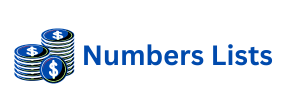In the digital landscape, compelling content is king. However, content alone is not enough. It must be optimized for search engines. This is where semantic SEO plays a crucial role. Semantic SEO moves beyond simple keyword matching. It focuses on understanding user intent. It also considers the relationships between topics. Effective content writing now demands a deeper approach. It ensures your message truly resonates. This method improves visibility and engagement. It makes your content more valuable. Understanding these core principles is vital.
A successful content strategy integrates many elements. It starts with thorough topic research. It then moves to structured content creation. Finally, it includes smart promotion. Each step builds on the last. Ignoring any part can weaken your efforts. Our goal is to create content that ranks. We also want it to genuinely help readers. This balance is key to long-term success. It builds trust and authority. Your content becomes a go-to resource. This creates a powerful online presence.
Unlocking Visibility with Semantic SEO Content Writing
Semantic SEO is about context and meaning. Search engines are smarter than ever. They analyze an entire page. They look for related concepts and entities. This helps them grasp the full topic. For content writers, this means thinking broadly. Do not just repeat target keywords. Instead, cover the topic comprehensively. Explore related subtopics and questions. This holistic approach signals expertise. It tells search engines you are an authority. Your content then becomes more relevant.
Creating semantically rich content benefits everyone. Users find more complete answers. Search engines rank more authoritative pages. This cycle drives organic traffic. It also boosts user satisfaction. Begin by mapping out your content. Think about what users truly want to know. Use tools to uncover related terms. Include these naturally throughout your text. This builds a strong semantic web. It enhances your overall content quality. This is fundamental for modern SEO.
Deep Dive into Keyword Strategy for Content Success
Keyword research remains essential for content writing. Yet, its application has evolved. It is not just about finding high-volume terms. It is about understanding user intent. Are users looking for information? Do they want to make a purchase? Is their goal comparison? Aligning content with intent is crucial. This ensures you provide the right answers. It matches user queries accurately. This precision leads to higher engagement rates.
Beyond primary keywords, explore long-tail variations. These are often more specific. They represent distinct user needs. Long-tail keywords usually have less competition. They also convert better. Incorporate latent semantic indexing (LSI) keywords. These are related terms and phrases. They support your main topic. For instance, an article on “coffee” might include “espresso” or “roast.” This enriches your content context. It signals broader relevance to search engines. Smart keyword integration is now a must.
Mastering the Art of the External Backlink
External backlinks are a cornerstone of SEO. They are links from other websites to yours. Search engines view them as votes of confidence. Each quality backlink signals authority. It shows your content is valuable. Earning these links improves your domain authority. Higher authority often leads to better rankings. It is crucial to focus on quality over quantity. A few strong links are better than many weak ones. Seek links from reputable sources. Ensure they are relevant to your niche. This strategy yields the best results.
Building external backlinks requires effort. It often involves outreach to other sites. You might offer guest posts. Or you could promote unique research. Creating truly exceptional content is key. This content naturally attracts links. People want to reference valuable resources. Monitor your backlink profile regularly. Disavow any spammy or irrelevant links. A clean profile maintains your site’s health. Focus on building genuine relationships. This fosters a natural link-building environment. It is an ongoing, vital process.
Building Authority with Internal Backlink Structures
Internal backlinks are links within your own website. They connect related pages together. These links serve multiple important purposes. First, they help users navigate your site. They guide visitors to more relevant content. This keeps them on your site longer. Second, they distribute “link equity.” This is also known as “link juice.” It flows from strong pages to weaker ones. This boosts the authority of linked pages. Third, they help search engine crawlers. They discover new and updated content easily. This ensures better indexing of your entire site.
A well-planned internal linking strategy is essential. Think about your site’s architecture. Create a logical flow between topics. Link from high-authority pages to new content. Use descriptive anchor text for your links. Avoid generic phrases like “click here.” Instead, use keywords that describe the linked page. This provides context to both users and search engines. Regularly audit your internal links. Fix any broken links promptly. This maintains a smooth user experience. It also preserves your SEO efforts. Strategic internal linking strengthens your entire domain.
Harmonizing Strategies for Superior Search Engine Performance
Combining these elements creates a powerful synergy. Semantic SEO ensures content relevance. Strong keywords capture specific user intent. External backlinks build crucial domain authority. Internal backlinks enhance site navigation and equity distribution. Each component supports the others. Neglecting any part weakens the whole system. A holistic approach is always more effective. It positions your content for optimal performance. This leads to sustainable organic growth. It builds lasting online presence.
Regular analysis and adaptation are paramount. Search algorithms evolve constantly. User behaviors also change over time. Stay updated with the latest SEO trends. Review your content performance metrics. Identify what works well and what needs improvement. Be prepared to refine your strategies. This continuous optimization cycle is vital. It keeps your content competitive. It ensures your message reaches its intended audience. Embrace these integrated strategies for true content writing success.
